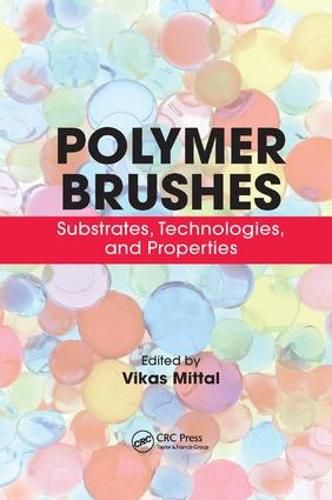Readings Newsletter
Become a Readings Member to make your shopping experience even easier.
Sign in or sign up for free!
You’re not far away from qualifying for FREE standard shipping within Australia
You’ve qualified for FREE standard shipping within Australia
The cart is loading…






Polymer Brushes: Substrates, Technologies, and Properties covers various aspects of polymer brush technology, including synthesis, properties, performance, and applications. It presents both experimental details and theoretical insights to enable a better understanding of the brush system.
After an overview of polymer brush systems, the book discusses methods for grafting organic brushes from the surface of clay platelets and for the covalent grafting of PNIPAm brushes. It then describes ferrocene polymer brushes, nonfouling brushes on poly(ethylene terephthalate) film surfaces, brushes formed on the inner surface of cylindrical pores, and the zipper brush approach. The authors examine the use of scanning electrochemical microscopy for analyzing brushes and compare surface-controlled atom transfer radical polymerization and surface-controlled single-electron transfer living radical polymerization. They also explore the application of polymer brushes in the chromatographic separations of viruses and proteins and the suppression of proteins and cell adhesions. The text concludes with a look at how polymer brushes are synthesized by surface-initiated iniferter-mediated polymerization.
This book provides a one-stop reference on the various substrates and technologies used to synthesize polymer brushes. The hands-on information in the text will help readers choose the proper synthesis methods and materials for their system.
$9.00 standard shipping within Australia
FREE standard shipping within Australia for orders over $100.00
Express & International shipping calculated at checkout
Polymer Brushes: Substrates, Technologies, and Properties covers various aspects of polymer brush technology, including synthesis, properties, performance, and applications. It presents both experimental details and theoretical insights to enable a better understanding of the brush system.
After an overview of polymer brush systems, the book discusses methods for grafting organic brushes from the surface of clay platelets and for the covalent grafting of PNIPAm brushes. It then describes ferrocene polymer brushes, nonfouling brushes on poly(ethylene terephthalate) film surfaces, brushes formed on the inner surface of cylindrical pores, and the zipper brush approach. The authors examine the use of scanning electrochemical microscopy for analyzing brushes and compare surface-controlled atom transfer radical polymerization and surface-controlled single-electron transfer living radical polymerization. They also explore the application of polymer brushes in the chromatographic separations of viruses and proteins and the suppression of proteins and cell adhesions. The text concludes with a look at how polymer brushes are synthesized by surface-initiated iniferter-mediated polymerization.
This book provides a one-stop reference on the various substrates and technologies used to synthesize polymer brushes. The hands-on information in the text will help readers choose the proper synthesis methods and materials for their system.